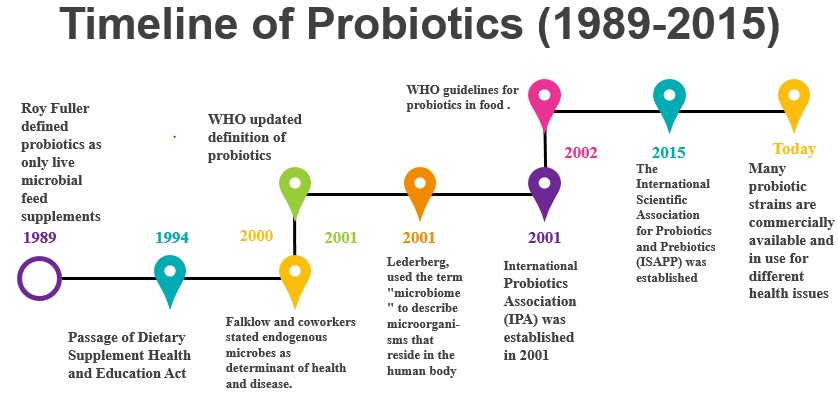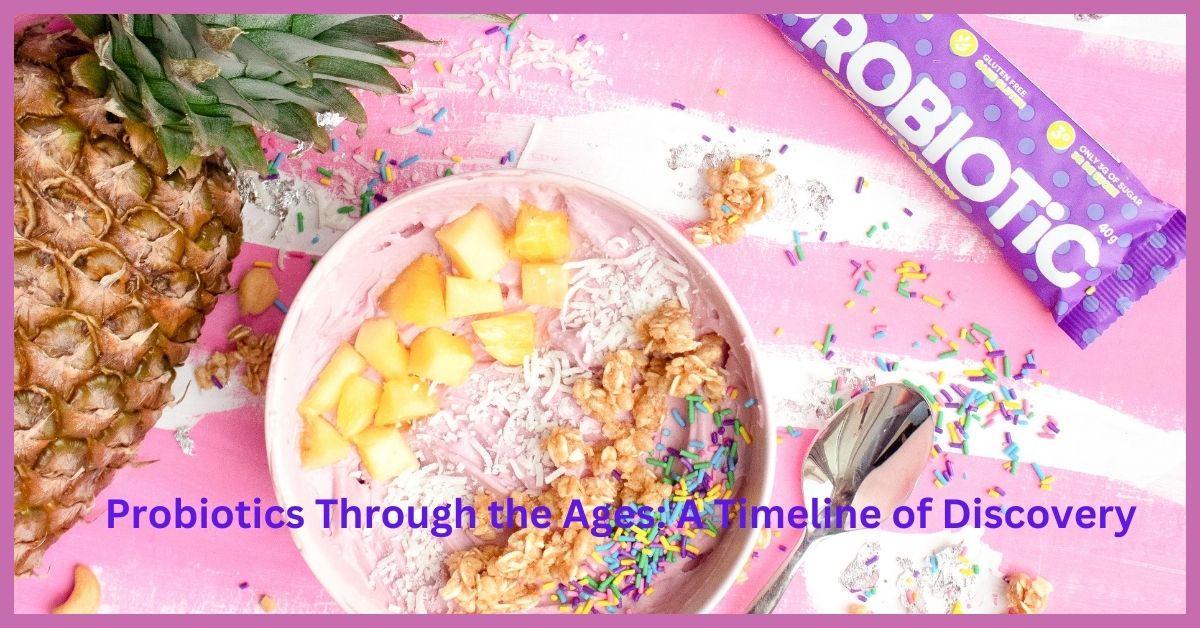The Early Adoption of Microbes
Over two thousand years ago, Hippocrates said that “death sits in the bowels.”
Fermentation has been documented for several thousand years. The world’s oldest cheese was discovered on a 1615 BC mummy in the Taklamakan region of China; it was most likely a component of the food that was left in the burial. Fermented milk products were utilized by Hindus, Egyptians, Greeks, and Romans, according to textual and iconographic evidence from 3000 and 2000 BC, though their origins are most likely considerably older.
Excavations at Jiahu, an ancient city located in the southwestern part of the Chinese Republic, have produced some of the most fascinating discoveries in human history. After examining the evidence, archaeologists determined that fermented beverages were created using microbes as early as 7000 BC. According to molecular archaeologists from the University of Pennsylvania studying one of the oldest pieces of pottery, the earliest form of beer was produced from grains, honey, and fruits that were fermented with yeast. In a recent publication, Professor Patrick McGovern from the distinguished Archaeology Department at the University of Pennsylvania suggests that wine was first made in Georgia around 6000 BC. Discoveries in the Zagros Mountains of western Iran have uncovered the oldest known wine jars, dating back to 5500 BC.
The First Encounters with Beneficial Microbes
Initially, Doderlein found in 1892 that microbes and human health were positively correlated. It was discovered that vaginal bacteria either stop the growth of harmful bacteria or make lactic acid from carbohydrates. Important studies on the intestinal flora started at the start of the 20th century, and many of the species of other lactobacilli listed are closely related to L. acidophilus. Ernst Moro isolated the Lactobacillus acidophilus, formerly known as Bacillus acidophilus, from baby feces at that time. Cahn studied the intestinal ecosystem microbiota of newborn feces in 1901, the same year Martinus Willem Beijerinck worked on the taxonomy of Lactobacillus acidophilus.
The Origins of Microbial Research for Health Benefits
1906
Henry Tissier described the clinical advantages of controlling the microbial flora in infants suffering from intestinal infections by substituting Enterobacteriaceae and Bifidobacteria for harmful bacteria in 1906. The same year, Michel Cohendy worked with fermented milk derived from Lactobacillus acidophilus, eventually known as Bulgaricus. He discovered that following a diet high in nutrients, the putrefaction products in the colon decreased.
1906
A French society called “Le Fermente” started selling Lactobacilline, a fermented milk product that included Lactobacillus delbruekii and Streptococcus thermophilus, in 1906.
1907
Ilya Ilyich Metchnikoff provided a scientific explanation for the health advantages of yogurt in 1907, claiming that the Bulgarians’ long lifespan was due to their ingestion of yogurt containing Lactobacillus species. Eduard Buchner, a German scientist, won the Nobel Prize in 1907 for demonstrating that fermentation is caused by enzymes in yeast cells.
1917
A strain of Escherichia coli was discovered from a soldier who was not afflicted by shigellosis in 1917 by German professor Alfred Nissle. He subsequently utilized this to treat acute gastrointestinal salmonellosis and shigellosis.
1919
Isaac Carasso started making yogurt commercially in Spain in 1919.
1922
Rettger and Cheplin discovered in 1922 that milk containing Lactobacillus acidophilus has therapeutic properties, notably in the area of digestion. Their argument, which supported the use of intestinal isolates, was based on the idea that the colonization and growth of the supplied bacteria were critical to their efficacy.
1929
In 1929, Hans Euler-Chelpin and Arthur Harden were awarded the Nobel Prize for their work explaining how these enzymes lead to fermentation.
1930
Research on intestinal bacterial strains capable of surviving gut passage began around 1930, led by Japanese researcher Minoru Shirota. He identified the Lactobacillus casei strain shirota, which paved the way for probiotic therapy. In 1935, the first fermented milk drink was created and commercialized as Yakult, which continues to be produced and sold globally today.

Use of the term Probiotics
1953
The name probiotic is derived from the Latin pro and the Greek bios, which means “for life.” Kollath first used the word in 1953 to describe a combination of inorganic and organic nutrients intended to help malnourished patients restore their health.
1954
Ferdinand Vergin, a German researcher, coined the term probiotika in 1954 to refer to “active substances that are essential for the healthy development of life.”
1962
Probiotics were defined by Lily and Stillwell in a 1962 Science article to include “the anaerobic bacteria that are capable of producing lactic acid and enhance the growth of other organisms.”
1974
In 1974, Parker proposed that the concept of “probiotic” should include various substances that help maintain gut microbial equilibrium and microbial diversity.
1992
In 1992, Roy Fuller established the modern definition of probiotics, which eliminates the phrase “other substances” and describes them as “live microbial feed additives that provide advantages to the host animal by enhancing its intestinal microbial balance.””
Modern Research in Probiotics
Due to the Great Depression, World War II, and the development and widespread use of antibiotics, interest in probiotics steadily declined starting in the late 1930s. However, global trends from the 1980s to the present have included disparities in the availability and/or use of standard infection prevention measures, a lack of pharmaceutical research and development in infectious diseases, rising antibiotic costs, and an increase in antimicrobial resistance. Since probiotics are generally considered a non-antibiotic method of preventing and maybe treating a range of infections, interest in them has increased. Sales of items advertised as probiotics increased dramatically after the Dietary Supplement Health and Education Act was passed in 1994.

2000
Falkow and his team have utilized molecular genetics tools to study Salmonella. They have observed how bacteria regulate the function of host cells, the impact of horizontal gene transfer on pathogen specialization, and how benign bacteria can transform into pathogens through inherited pathogenicity islands.
2001
In 2001, the World Health Organization, in collaboration with the Food and Agricultural Organization of the United Nations (FAO/WHO), conducted an expert consultation to clarify the definition of “probiotic.” The FAO/WHO describes probiotics as “live microorganisms that, when taken in sufficient quantities, provide a health benefit to the host.”
2001
In 2001, Dr. Joshua Lederberg, a Nobel Prize winner, introduced the term “microbiome” to refer to an ecological network of commensal, symbiotic, and potentially harmful microorganisms living in the human body. The term “microbiome” now generally denotes a collection of the genomes of microorganisms that inhabit a specific niche, whereas “microbiota” refers to the actual group of microorganisms, including bacteria, fungi, or archaea.
2001
As interest in probiotics and their health advantages grew, the International Probiotics Association (IPA) was founded in 2001. The global community of scientists, researchers, manufacturers, and consumers interested in the development of probiotics and prebiotics is represented by this organization.
2002
Guidelines for probiotics in food were published in 2002 by the Food and Agriculture Organization (FAO) and the World Health Organization (WHO). These recommendations sought to guarantee the safe and efficient use of probiotics in food products by offering a framework for their assessment.
2015
Since its founding in 2015, the International Scientific Association for Probiotics and Prebiotics (ISAPP) has become a significant organization devoted to the study and use of probiotics and prebiotics. ISAPP seeks to close the knowledge gap between scientific research and real-world applications in nutrition and health, acknowledging the increased interest in these fields.
Present-day Market of Probiotics
In 2013, the probiotics market was estimated to be worth USD 32.06 billion worldwide. By 2026, the probiotic product market is expected to have grown to a value of 3.5 billion US dollars. With a long history of consuming fermented dairy products, which have had the greatest growth in this industry, consumer acceptability of probiotics varies greatly throughout European nations. The market for probiotic products is dominated by Germany, which is followed by the United Kingdom and France. There are over 100 businesses in this industry in America and Canada alone, and the combined sales of Chr. Hansen, Danisco, and Lallemand account for 70% of the market for probiotic cultures.
The market for functional foods in Japan was valued at over $15 billion and has been expanding steadily over the past ten years. A survey claims that the Japanese spend about $100 per person on functional foods each year, far more than people in the US ($67.9), Europe ($51.2), and Asia ($3.20).
References
Gasbarrini, G., Bonvicini, F., & Gramenzi, A. (2016). Probiotics history. Journal of clinical gastroenterology, 50, S116-S119.
Ozen, M., & Dinleyici, E. C. (2015). The history of probiotics: the untold story. Beneficial microbes, 6(2), 159-165.
Goldin, B. R. (2011). Probiotics and health: from history to future. Probiotics and health claims, 1-16.
McFarland, L. V. (2015). From yaks to yogurt: the history, development, and current use of probiotics. Clinical Infectious Diseases, 60(suppl_2), S85-S90.
Lauzon, H. L., Dimitroglou, A., Merrifield, D. L., Ringø, E., & Davies, S. J. (2014). Probiotics and prebiotics: concepts, definitions and history. Aquaculture nutrition: gut health, probiotics and prebiotics, 169-184.



